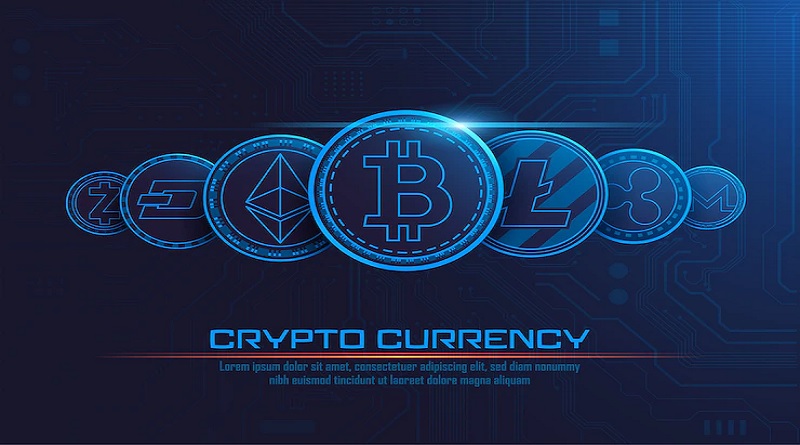Fast and simple payments are only two of the many advantages that crypto assets provide. Financial services that are cutting-edge in nature, access to previously “unbanked” regions of the globe – the crypto-ecosystem enables all of this. However, it should be stated that apart from the benefits that are typical of digital assets, they are linked to some risks and challenges, which should be considered by authorities in order to avoid a plethora of problems in the financial industry – specifically in payment systems. Let’s take a look at it in more detail.
Risks Associated With Crypto
When it comes to crypto and payment systems, stablecoins are one of the most discussed topics. Stablecoin growth has continued, even though there are rules about regulatory compliance, the quality and amount of currency reserves, and how to handle risk and solve problems. This is partly because DeFi was created. Today, the major usage of stablecoins is to serve as an intermediary currency between conventional fiat currencies and crypto-assets, which may have ramifications for market stability and efficiency. Liquidity in the larger crypto-asset ecosystem (including DeFi) might be reduced if a major stablecoin fails, interrupting trade and perhaps stressing those markets. If stablecoin reserve holdings are liquidated in a chaotic way, this might potentially affect short-term financing markets.
Because stablecoins play a major role in the case of payment systems, the crypto market crash may be a big risk and danger for these systems. As the market crash continued in a progressive way, stable coins, even though they are linked to fiat money, started to decrease in value. As a result, Many newbie crypto investors started to adopt Bitcoin Smarter and other automated tools, which make the trading process easier in the moment of a market crash. A great example of stable coins losing their value is the Terra Luna token, which lost its value at the beginning of May, as a result of a significant decrease in the crypto market value. During instances of market instability, crypto exchanges have experienced major interruptions. Several high-profile hacking-related thefts of consumer money have also been reported. Financial stability has been unaffected by these instances so far. Even while crypto assets are still a relatively new phenomenon, their economic significance is only expected to grow as they become more widely accepted.
Surveys imply that emerging markets and developing economies may be leading the way in the adoption of crypto assets, but it is difficult to quantify.
The possibility of tax evasion via the use of crypto assets might likewise pose a threat to fiscal policy. There may also be a decrease in seigniorage (earnings generated by the authority to issue money). Capital outflows that affect the forex market might be facilitated by rising demand for crypto assets.
Regulators should take into account both the hazards posed by stablecoins and the economic tasks they provide. Regulations should, for example, be harmonized with businesses that supply comparable goods and services.
Are Regulations a Solution?
Cryptocurrencies are becoming more and more popular, and authorities are working hard to protect investors’ interests by making major efforts to regulate and regularize ICOs. After months of anticipation, the Federal Reserve finally published its long-awaited research on the costs and advantages of issuing a national digital currency. The Fed has given the public until May 20 to provide their views before making a final decision on whether or not to proceed. Also a popular issue, many experts believe that stablecoins will become the first kind of cryptocurrency to be subject to regulation.
So, can the crypto regulations be the remedy for the financial risks associated with digital currencies? Nowadays after the crypto market crash, more and more authorities started to think about taking measures in order to protect customers from fraud and scams. But, these regulations are a double-edged sword. Firstly, it can be profitable for investors, however, on the second hand, it may damage them as well.
However, as long as the crypto market is a decentralized marketplace, it will be quite hard for the authorities to define and create the legislation which will be proper and suitable for the marketplace. It is also worth stating that the regulations may not have a dramatic effect on the lawbreakers, as the blockchain system makes it almost impossible to find the wrongdoer. Nevertheless, with the help of regulation, authorities can check the companies that operate in the marketplace.
On the second hand, it should be said that regulation can be harmful to investors. The companies that are operating in the marketplace might find it difficult to make their services more innovative and helpful for the customers. The main idea here lies in the free market theory, which shows that markets free from taxes and regulations, can develop faster and quicker than the market that has a burden of laws and regulations. In the case of global payment systems, it should be highlighted that the regulations cannot have much effect. The crypto market is volatile and the customers cannot be protected from the price fluctuation. However, with the regulations, authorities can give crypto companies a responsibility to protect their customers from going bankrupt. But, this can be quite unprofitable for the firms that are operating in the market. As a result, regulations, like everything around the world, can lead to both positive and negative results.








